|
Wetland and Aquatic Plants
of
Oklahoma
Interactive Keys: Emergent
Grasslike
Rushes (Juncaceae)
1. Flowers in
dense heads
2. Flowers in loose
panicles
Note:
The seeds are eaten by several species of birds. The
dense growth of rushes in many wetlands
provides nesting cover for birds.
Flowers in dense
heads
Whiteroot rush (Juncus
brachycarpus Engelm.)
Native
perennial.
click thumbnails to enlarge
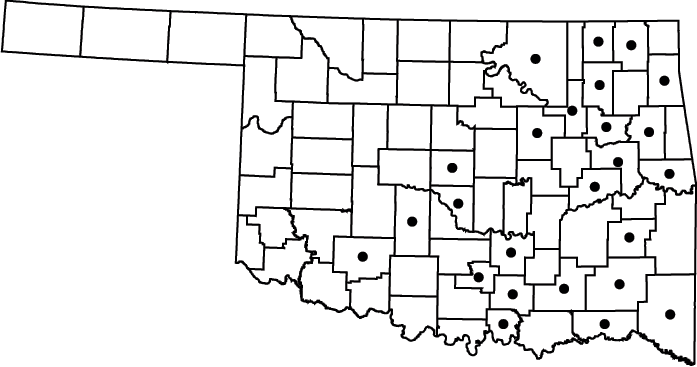
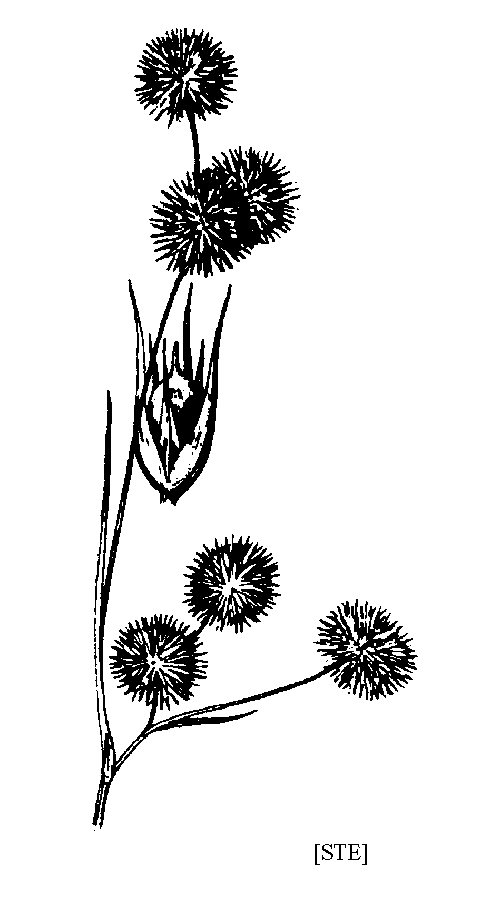
NWI
status: FACW
Needlepod rush (Juncus
scirpoides Lam.)
Native perennial.
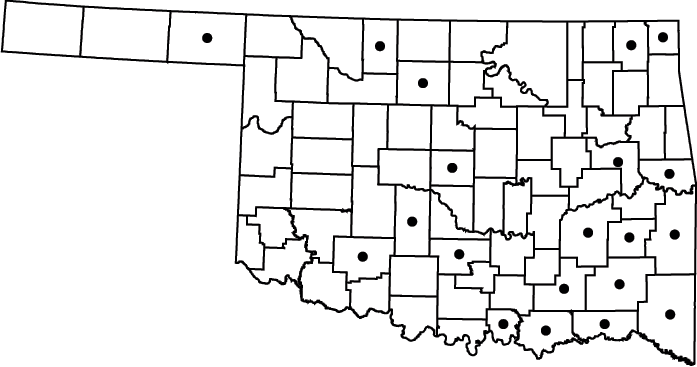
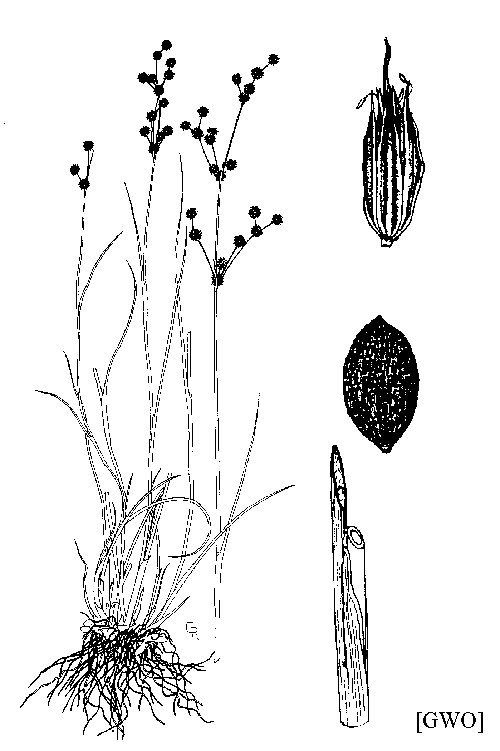
NWI
status: FACW+
Torrey's rush (Juncus
torreyi Coville)
Native perennial.
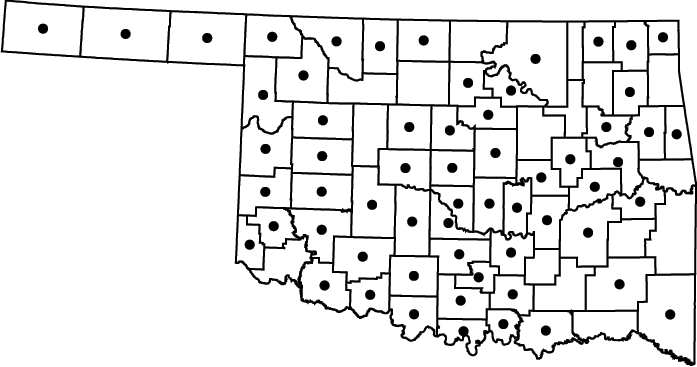
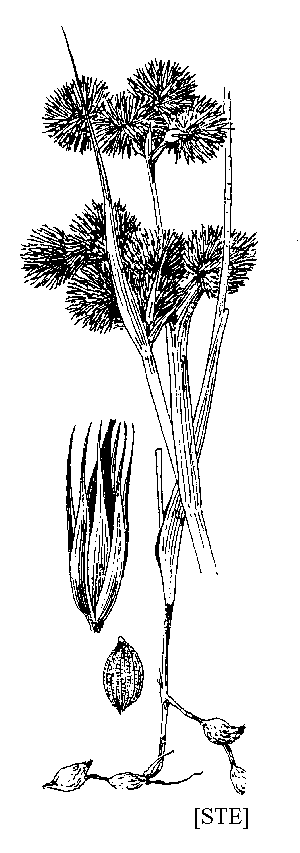
Note: The most common rush in western Oklahoma
wetlands.
NWI
status: FACW
Roundhead
rush (Juncus
validus Coville)
Native perennial.
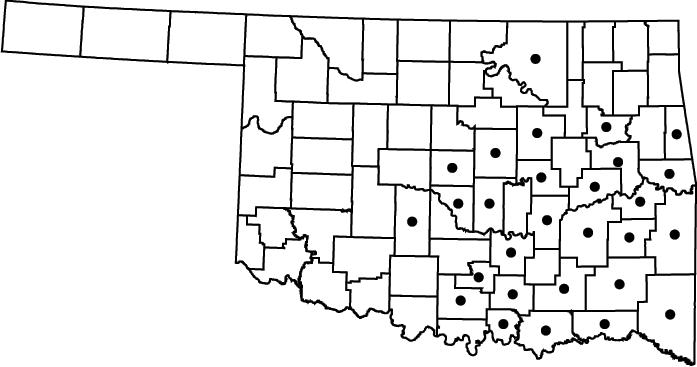
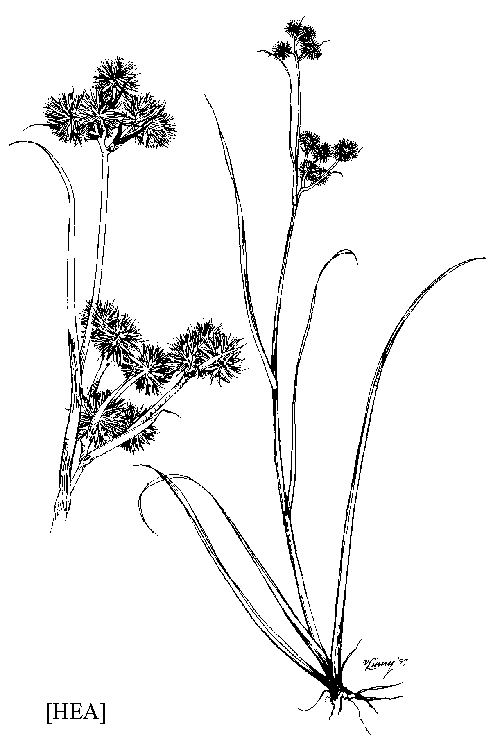
NWI
status: FACW+
Flowers in loose
panicles
Tapertip
rush (Juncus
acuminatus Michx.)
Native perennial.
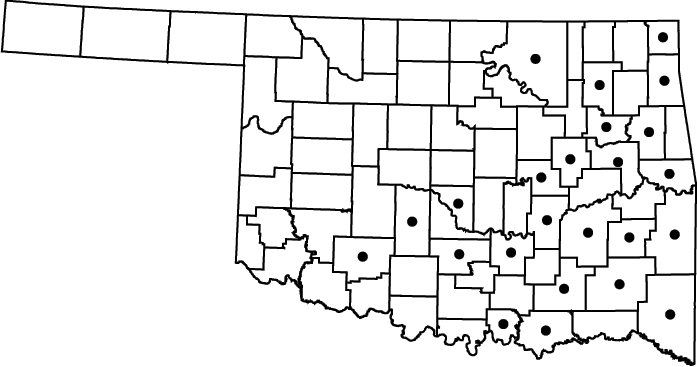
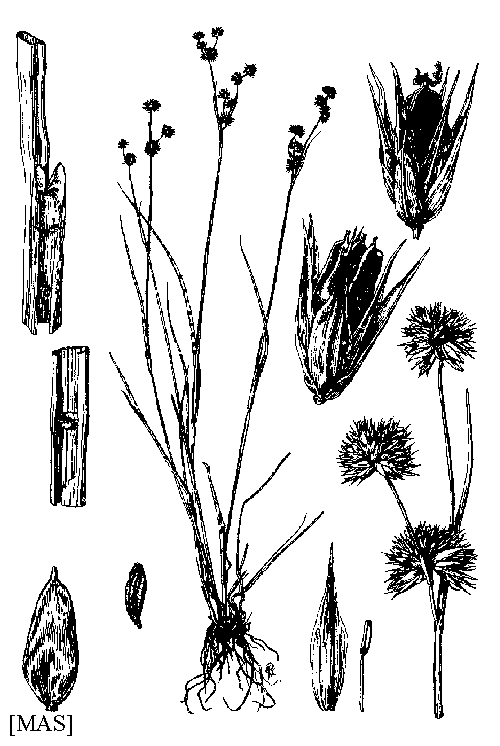
NWI
status: OBL
Baltic
rush (Juncus
balticus Willd.)
Native perennial.
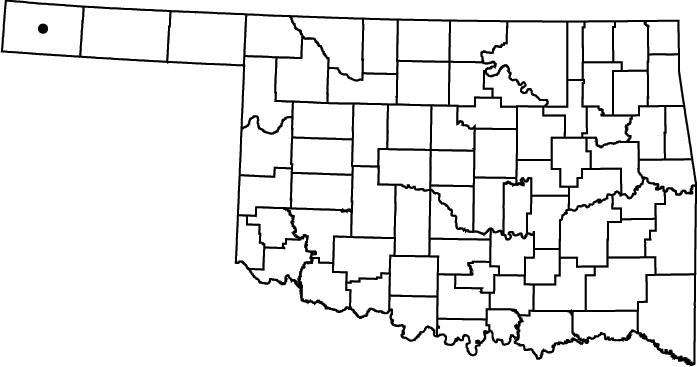
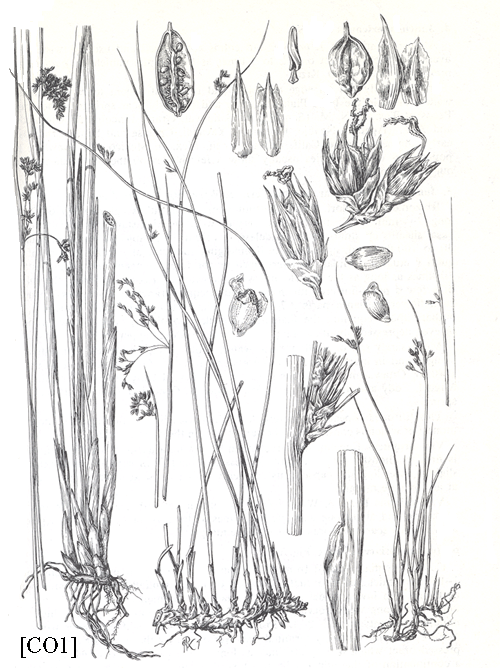
Note:
Baltic rush has
been collected in only Cimarron
County. The stems grow densely from a
rhizome. Used by the Cheyenne for
basketry.
NWI
status: FACW
Toad
rush (Juncus
bufonius
L.)
Native annual.
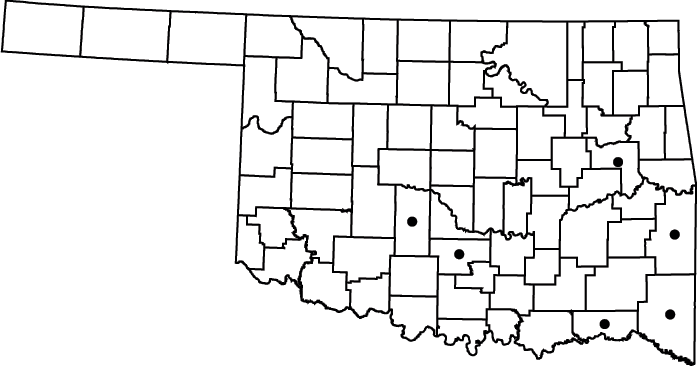
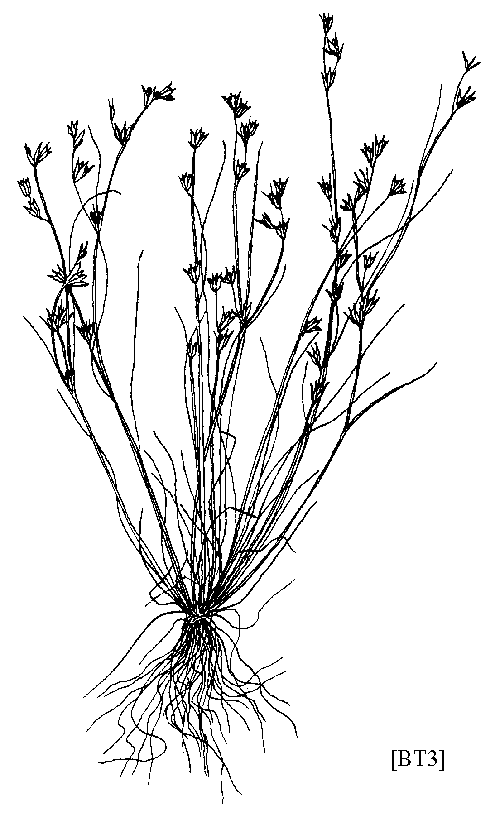
NWI
status: FACW
Leathery
rush (Juncus
coriaceus Mackenzie)
Native
perennial.
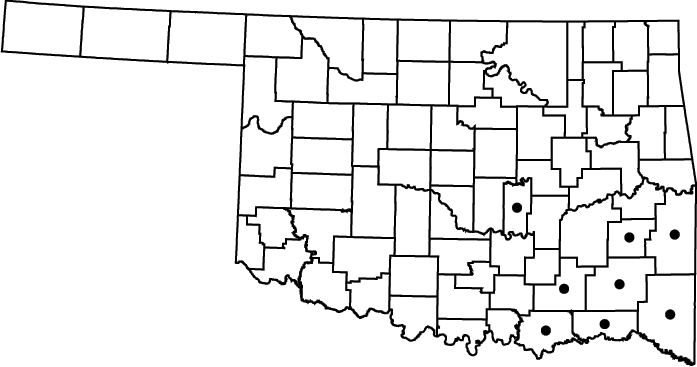
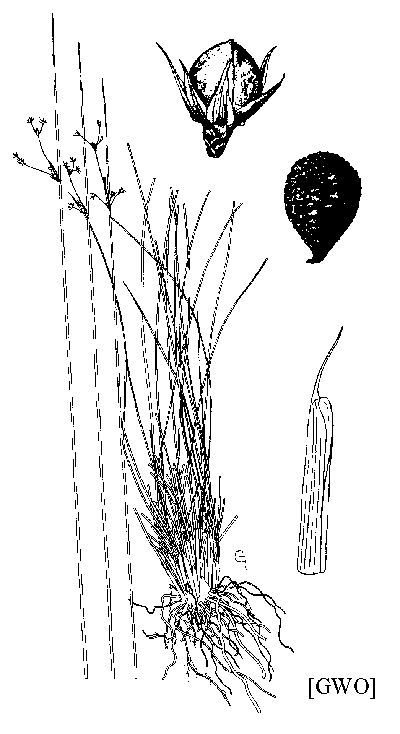
Note: Leathery rush is similar in appearance to
common
rush. However, there are fewer flowers (2 to 25) in
the leathery rush inflorescence and the capsules are rounded.
NWI
status: FACW
Slimpod
rush (Juncus
diffusissimus Buckl.)
Native
perennial.
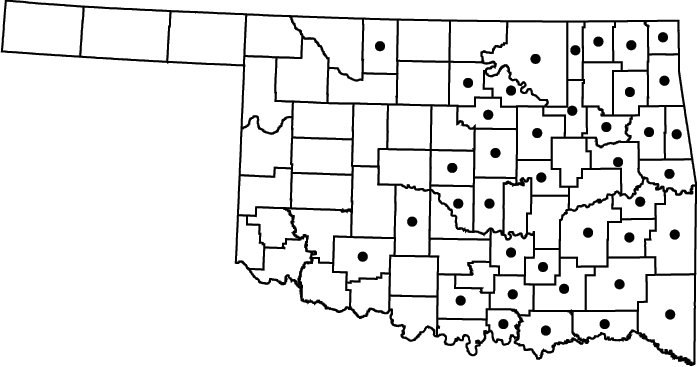
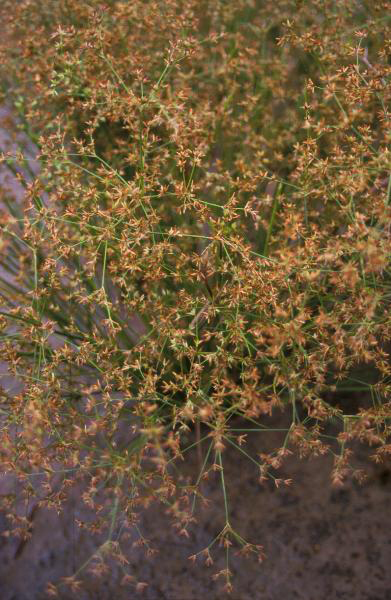
Note: The inflorescence of slimpod rush grows into
a very
open, distinctive panicle. The capsules
are elongated. Common in eastern
Oklahoma wetlands.
NWI
status: FACW
Common
rush (Juncus
effusus L.)
Native perennial.
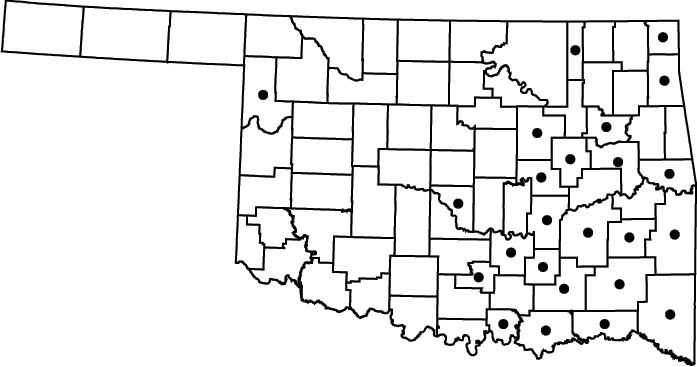
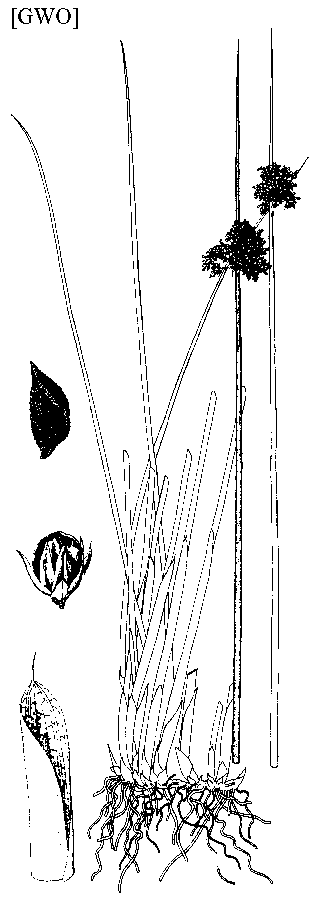
Note: Common rush is similar in appearance to
leathery
rush. However, common rush has many
flowers(25 to 100) in the inflorescence
and the capsules are ovoid. Very common
in eastern Oklahoma wetlands. Forms
dense stands in shallow water and along pond margins.
Used by the Cherokee as a medicine. Several
tribes used common rush as a fiber plant.
NWI
status: FACW+
Grassleaf
rush (Juncus
marginatus Rostk.)
Native perennial.
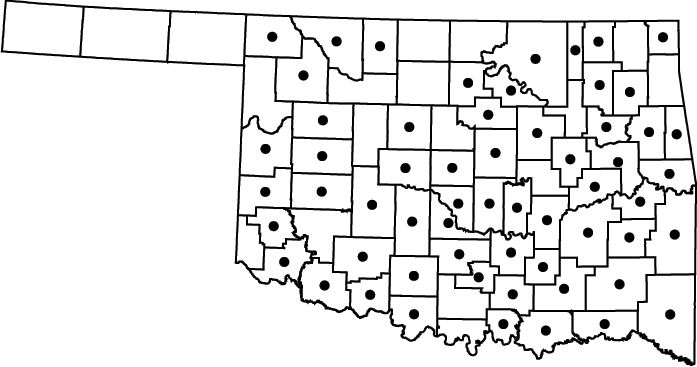

NWI
status: FACW
Creeping
rush (Juncus
repens Michx.)
Native perennial.
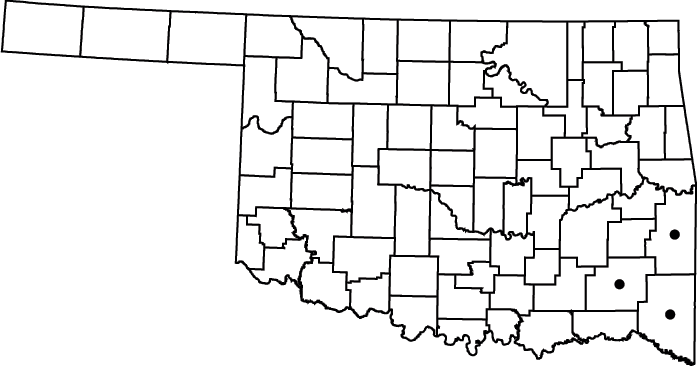
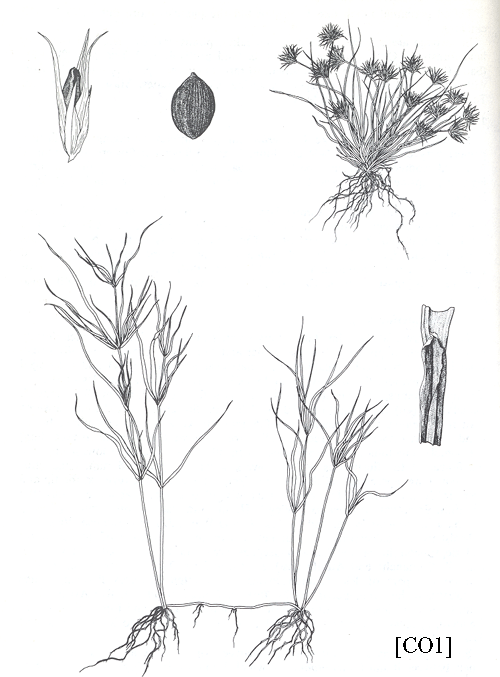
Note: A low growing species with limited
occurrences in
Oklahoma. Forms dense mats with stems
creeping along water surface.
NWI
status: OBL
Last update: 2/27/04
Comments to : Bruce Hoagland
bhoagland@ou.edu
Go to Oklahoma
Biological Survey Home Page
 Disclaimer Disclaimer
|

